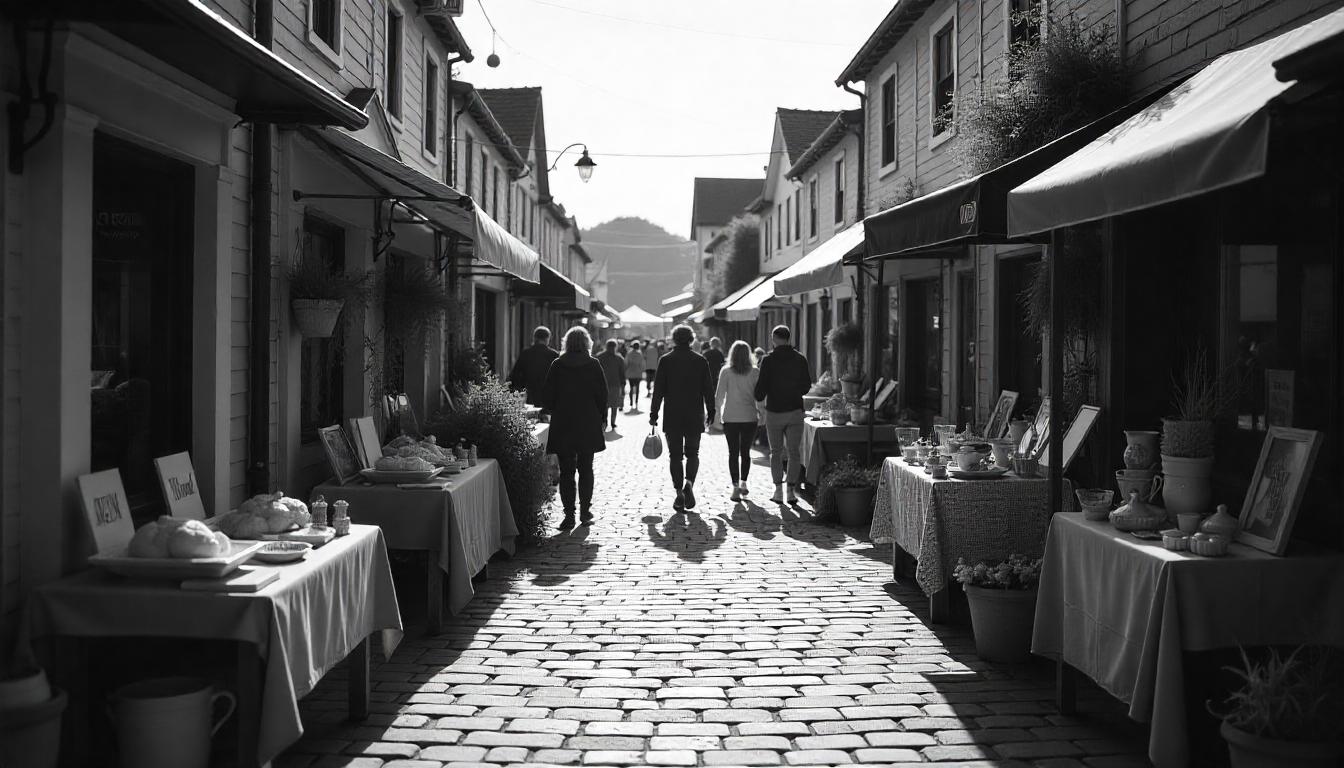By [Adeel Rajpoot]
There’s a moment, just before the sun lifts above the horizon, when the shoreline hums with a hush that only early risers know—the scent of salt hangs in the air, mingling with the earthy perfume of canvas tents being unfurled, wood shavings curling onto the sand, and freshly brewed coffee wafting from a vintage trailer turned espresso stand. This is the quiet beginning of a coastal craft fair, a ritual as rhythmic and time-honored as the tide.
Across America’s seaside towns, coastal craft fairs have emerged as more than just seasonal markets—they are vibrant gatherings that braid together creativity, culture, and community in the most elemental of places: by the sea. These events, often anchored in local heritage and shaped by artisans whose hands seem to echo the textures of the coast, offer a tactile, sensory experience unlike any digital storefront can replicate.
One of the most compelling examples of this phenomenon is Art Thunder on the Gulf, an annual crafts celebration that takes place along Alabama’s glimmering Gulf Coast. With its name evoking both the drama of summer storms and the electric creativity of the region’s artisans, Art Thunder pulses with life, color, and a contagious sense of belonging.
Where Creativity Rolls in With the Tide
At the heart of any coastal craft fair is the maker—be it the ceramicist who digs local clay and fires their work in a kiln built from driftwood bricks, or the weaver whose patterns mimic the tide lines and wind-etched dunes. At Art Thunder on the Gulf, these craftspeople arrive not as vendors, but as storytellers.
Each booth is a chapter: hand-dyed sea cotton scarves ripple on wooden racks like kelp in the current; hand-carved pelicans stare out stoically over the crowd; bottles of sea-glass jewelry catch the sunlight, sending tiny rainbow fragments across passersby’s skin.
“It’s not just about what we make,” says Leah Dunham, a fiber artist who has attended the fair for five years. “It’s how we make it, where we are when we’re making it, and who we’re making it for. The salt air gets in your lungs and your thread. It changes the work.”
The setting does more than inspire the artisans—it shapes the interactions. Unlike impersonal retail spaces, coastal craft fairs like Art Thunder dissolve barriers. Artists speak with visitors about their process. Children take part in spontaneous painting sessions under driftwood awnings. Musicians strum acoustic guitars from the back of pickup trucks, their melodies dancing across the sand. It’s a form of creative democracy—one where curiosity is the only currency.
Community, in the Most Tangible Sense
Coastal craft fairs serve as connective tissue for communities that might otherwise drift apart during the off-season. In seaside towns where tourism is king, fairs like Art Thunder act as a cultural anchor—welcoming tourists, yes, but also providing a stage for locals to celebrate themselves.
The event draws families, retirees, local chefs, school kids, and tourists all into the same open-air gallery. Grandparents reminisce about beach picnics from decades ago while teens trade handmade shell bracelets. Fishermen stop by to admire a scrimshaw carving etched into whale bone salvaged from a shipwreck. It’s a symphony of exchange—of ideas, of traditions, of hands brushing hands as change is passed or baskets are handed over.
“It brings us all back together,” says Melanie Robichaux, a Gulf Shores native and potter. “Especially after hurricane seasons or hard winters. Art Thunder reminds us what we’re made of. Salt. Grit. And creativity.”
Indeed, after storms sweep the coastline and erase docks, fences, even homes, these fairs become a means of restoration—not only economically, but spiritually. Booth by booth, the community rebuilds a vision of itself.
Coastal Culture as a Living Canvas
Art Thunder is just one example of how coastal craft fairs function as living museums—spaces where regional culture is not only preserved, but evolved.
In one corner, a booth features traditional coastal Choctaw beadwork, taught by a local elder whose great-grandmother sold her wares along the same stretch of sand over a century ago. In another, Cuban-American artists infuse beach scenes with bold tropical palettes and syncopated rhythm in brushstrokes—a nod to the multicultural layers that define Gulf culture.
Food vendors join the chorus, too, offering fried oyster po’boys, crawfish étouffée, mango-ginger popsicles, and sun tea brewed with sea herbs. You don’t just taste the region—you feel its heartbeat in every bite.
As the afternoon sun arcs overhead, casting golden light on the faces of visitors, it’s clear that these fairs are less about transactions and more about translation. Of coastal identity. Of intergenerational memory. Of the peculiar magic that happens when shoreline and soul meet.
A Resurgence in the Age of Digital Distance
The resurgence of coastal craft fairs, especially in the wake of increased online living, speaks to a deeper yearning—people want to touch the world again.
We’re no longer content with filtered scrolls of pixel-perfect pottery or mass-produced wall hangings made to mimic “handmade” aesthetics. We crave imperfection. We want to meet the people behind the work, to ask questions, to feel the breeze while choosing a sea sponge painting from a man who harvested the pigments himself from marshland ochres.
Art Thunder on the Gulf is emblematic of this shift—a movement toward presence. It’s not just a fair, it’s an invitation to reconnect: to coastal roots, to creative impulses, and to one another.
As dusk falls and the final notes of a fiddle fade over the dunes, the tents begin to come down. But the feeling lingers. It’s in the sandy soles of your feet, the curve of a clay mug in your palm, the scent of cedar that clings to your scarf. You don’t just leave with art. You leave with memory.
And in today’s world, that might be the most precious craft of all.


